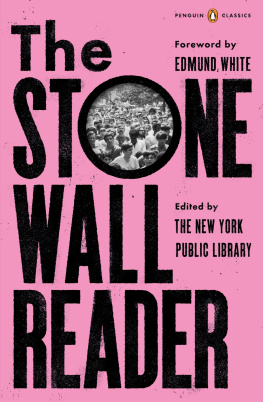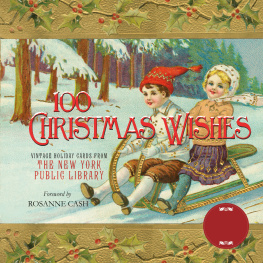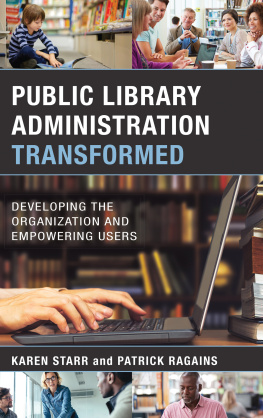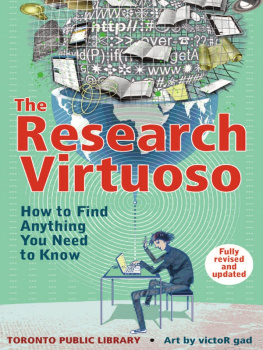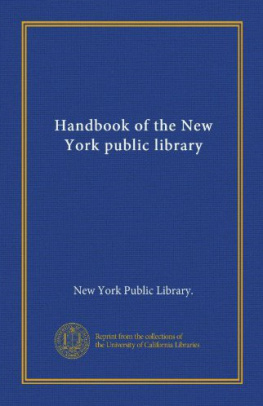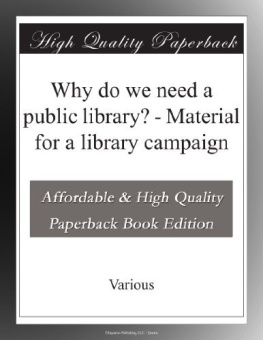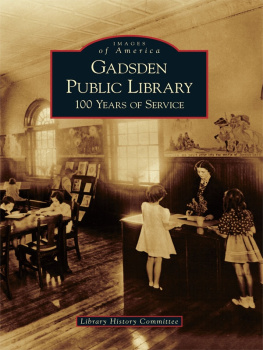New York Public Library - Treasures of New York Public Library
Here you can read online New York Public Library - Treasures of New York Public Library full text of the book (entire story) in english for free. Download pdf and epub, get meaning, cover and reviews about this ebook. year: 2021, publisher: St. Martins Publishing Group, genre: Religion. Description of the work, (preface) as well as reviews are available. Best literature library LitArk.com created for fans of good reading and offers a wide selection of genres:
Romance novel
Science fiction
Adventure
Detective
Science
History
Home and family
Prose
Art
Politics
Computer
Non-fiction
Religion
Business
Children
Humor
Choose a favorite category and find really read worthwhile books. Enjoy immersion in the world of imagination, feel the emotions of the characters or learn something new for yourself, make an fascinating discovery.

- Book:Treasures of New York Public Library
- Author:
- Publisher:St. Martins Publishing Group
- Genre:
- Year:2021
- Rating:3 / 5
- Favourites:Add to favourites
- Your mark:
- 60
- 1
- 2
- 3
- 4
- 5
Treasures of New York Public Library: summary, description and annotation
We offer to read an annotation, description, summary or preface (depends on what the author of the book "Treasures of New York Public Library" wrote himself). If you haven't found the necessary information about the book — write in the comments, we will try to find it.
Treasures of New York Public Library — read online for free the complete book (whole text) full work
Below is the text of the book, divided by pages. System saving the place of the last page read, allows you to conveniently read the book "Treasures of New York Public Library" online for free, without having to search again every time where you left off. Put a bookmark, and you can go to the page where you finished reading at any time.
Font size:
Interval:
Bookmark:
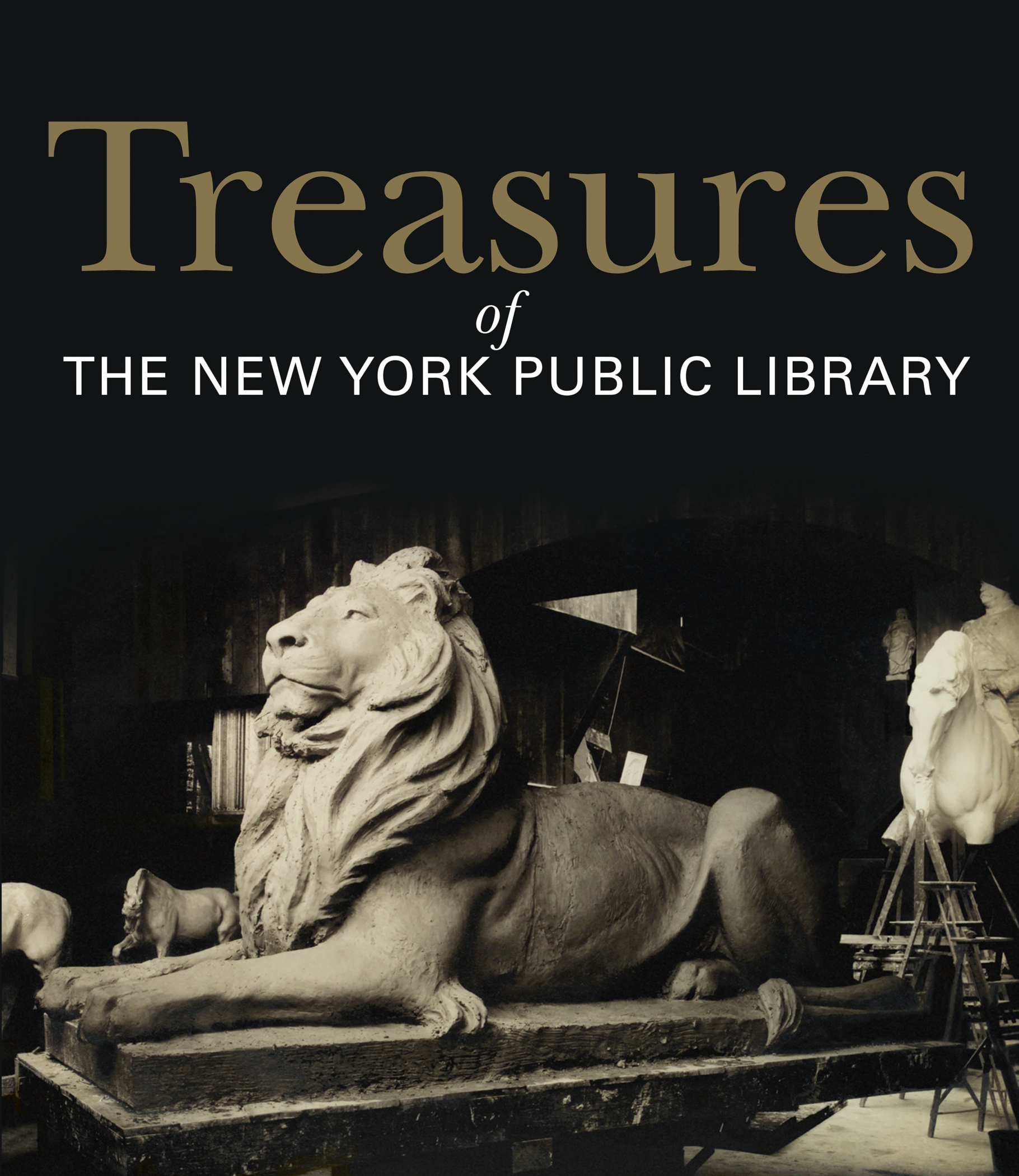

The author and publisher have provided this e-book to you for your personal use only. You may not make this e-book publicly available in any way. Copyright infringement is against the law. If you believe the copy of this e-book you are reading infringes on the authors copyright, please notify the publisher at: us.macmillanusa.com/piracy.
This book was created with a generous gift from Dr. Georgette Bennett in honor of her husband, Dr. Leonard Polonsky, CBE, and the Polonsky Exhibition of the Treasures of The New York Public Library.
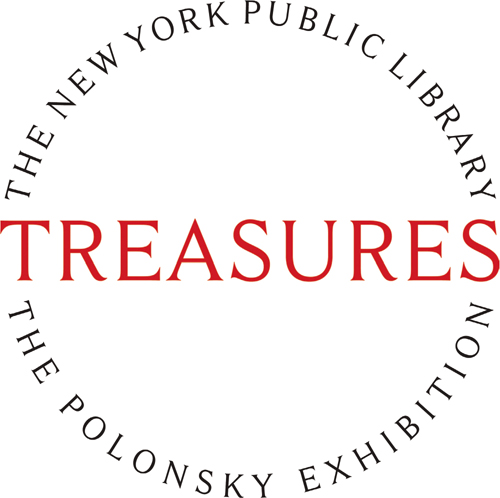
by Anthony W. Marx, President and Chief Executive Officer
Public libraries are at the foundation of our democracy of informed citizens, making information, fact, knowledge, and opportunity available to all. The New York Public Library is one of the oldest and largest public library systems in the country, and at its heart are its extraordinary and diverse collections.
For over a century, The New York Public Library has collected, preserved, and made accessible the worlds history, documenting our collective experience via manuscripts, rare books, photography, maps, audio and moving images, ephemera, unusual objects, and more.
These collections are more than the documenting, musings, writings, and thoughts of universally accepted great writers and historic leaders, but often the work of everyday people, chronicling day-to-day life in New York City, the United States, and beyond.
The Library has always taken seriously its role to preserve history from varying perspectives and to make that knowledge and education accessible to all. The only requirement for accessing our research collections is curiosity. Any individual can view, study, learn from, and be inspired by these collections, as have countless scholars and researchers of all ages and backgrounds.
An immeasurable number of works of fiction and nonfiction, art, performance, scholarship, and more were inspired and informed by the collections preserved by The New York Public Library. In the broadest sense, the Library has shaped our cultural and educational landscape. In a personal sense, the Library sparks excitement through these collections every day. There is nothing like the wonder of serendipitous discovery, of learning something new from our past, of uncovering a gem that can help us better navigate todays waters.
That noble mission of our research libraries is arguably more important than ever, as truth and fact continue to be blurred, and too often we are forgetting the vital lessons of our past. But those lessons are still here, captured through the vast array of material that has withstood time.
This is why it is so important to the Libraryand to me personallythat we keep on permanent display a rotating collection of some of our most profound, rich, inspiring research collection items in the Polonsky Exhibition of The New York Public Librarys Treasures. The exhibitions first iteration ranges from the seemingly mundane to the monumental, and provides unique perspectives and glimpses into the places, events, and lives of people over history.
Visitors will be transported thousands of years into the past to the day-to-day lives of now-ancient civilizations while viewing cuneiform tablets, one of the earliest examples of the written word. They will get a sense of how Thomas Jefferson felt during that hot summer in Philadelphia writing the Declaration of Independence, and actually see that this venerable document was, in fact, debated until the last moment. They will peek into the minds of Malcolm X, Virginia Woolf, Charles Dickens, Phillis Wheatley, and so many other luminaries, leaders, and writers through their notes, drafts, manuscripts, typescripts, photographs, and letters. They will see and hopefully better understand what it was like to be an African American traveling in the Jim Crow South by viewing our Green Books, and discover early documentation of the fight for LGBTQ rights. And thats just a small sample.
In this exhibition, one will get direct access to figures from history. Information, fact, and knowledge from the primary sources. The first drafts of history. The history you may not learn in school. Its here.
It has been my personal goal since I joined the Library to ensure that every visitor to its iconic 42nd Street library experiences these treasures and is motivated to learn more about our past, our heroes, our mistakes, and our world. We cant build on the foundation created by those who came before us without understanding that foundation. These itemsand over 46 million others in our research collectionshave always been and will always be accessible to anyone who wants to learn from them. This book documenting some of the exhibition is a first step toward that end, providing all readers and visitors with the small taste they need to provoke questions, inspire curiosity, and drive future visits to dig deeper into our collections.
I hope everyone enjoys and appreciates the Polonsky Exhibition and this gorgeous memento of its highlights, and I hope many will be inspired to visit or return to our research libraries to learn more.
by William P. Kelly, Andrew W. Mellon Director of the Research Libraries, and Declan Kiely, Director, Special Collections and Exhibitions
What constitutes a treasure? How is it defined? The word treasure has been around for centuries. Its origin lies in the Greek word  (thsauros), meaning treasure, treasury, storehouse or collection. The word was Latinized as thsaurus, a term that Peter Mark Roget adopted in 1852 to describe his treasure trove of synonyms. It thence evolved from Anglo-French into Middle English as tresor. In the popular imagination, the word treasure conjures up images of chests overflowing with precious metals, jewels, or money. We may think of the quest for Captain Flints buried treasure in Robert Louis Stevensons Treasure Island, or the dragon Smaug curled atop his golden hoard in The Hobbit.
(thsauros), meaning treasure, treasury, storehouse or collection. The word was Latinized as thsaurus, a term that Peter Mark Roget adopted in 1852 to describe his treasure trove of synonyms. It thence evolved from Anglo-French into Middle English as tresor. In the popular imagination, the word treasure conjures up images of chests overflowing with precious metals, jewels, or money. We may think of the quest for Captain Flints buried treasure in Robert Louis Stevensons Treasure Island, or the dragon Smaug curled atop his golden hoard in The Hobbit.
We can go as far back as Chaucers Canterbury Tales to find the term used in just this way, as in The Pardoners Tale: This tresor hath Fortune unto us yiven / In myrthe and joliftee oure lyf to lyven (This treasure has Fortune unto us given / In mirth and jollity our life to live.) In Chaucers moral exemplum on the dangers of cupidity, this interpretation of the meaning of tresor proves to be a fatal misunderstanding. The word functions as a similarly loaded term in The Merchants Tale, in which Chaucer tells us that a wyf is the fruyt of his tresor (a wife is the best part of his treasure).
Treasure, then, is a word often associated with opportunity, risk, danger, avarice, or mere contented acquisitiveness. But what does it mean in the context of The New York Public Library, and the permanent, rotating exhibition of the Librarys treasures that the Polonsky Foundation has underwritten? If the Library were to assemble and display a group of items based purely on their appraised value, it would be a gratuitous exercise lacking coherence. It is better to think of the Librarys treasures in the words verbal sense: to hold as precious, to collect and store up something of value for future use. This is the meaning that one encounters (courtesy of Milton) at the threshold of the Rose Main Reading Room on the Librarys third floor: A good Booke is the pretious life-blood of a master spirit, imbalmd and treasurd up on purpose to a life beyond life.
Font size:
Interval:
Bookmark:
Similar books «Treasures of New York Public Library»
Look at similar books to Treasures of New York Public Library. We have selected literature similar in name and meaning in the hope of providing readers with more options to find new, interesting, not yet read works.
Discussion, reviews of the book Treasures of New York Public Library and just readers' own opinions. Leave your comments, write what you think about the work, its meaning or the main characters. Specify what exactly you liked and what you didn't like, and why you think so.

